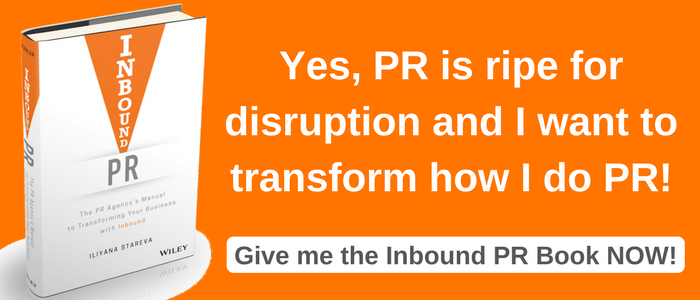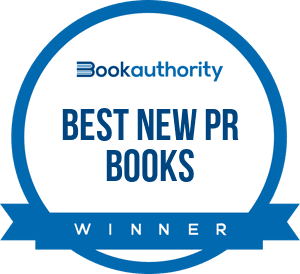
Organisational structure inefficiencies, lack of documented processes and standardised service packages, no plan for new hire training and onboarding as well a lack of visibility into overservicing are some of the key challenges that agencies face when they start to scale.
We covered them in part 1 and part 2 of these series.
Today, we'll look at the last set of agency growth challenges, namely:
- Stepping back as the agency founder or CEO and allowing team members to make decisions on their own is an internal struggle that can stall sustainable growth.
- Growing the team, the customer base and the service offerings often leads to a leadership and an identity and positioning crisis internally that inevitably has the potential to slow growth as it expands externally too.
- Showing the real value the agency brings to clients is a constant struggle, particularly with year two or three renewals, so agencies need to think about developing a delight programme that also includes the identification of upsells.
Let's take a look at each challenge in more detail.
When Agencies Start to Scale: The 3 Final Key Learnings & Fixes
1. How the CEO Really Needs to Step Back to Avoid Management, Responsibility & Decision-Making Issues
In the case where an agency was founded by a visionary entrepreneur, you always see how this entrepreneur has a really hard time stepping back when the agency and the team grow.
What happens then is that the agency founder ends up having the responsibilities of a CEO and a marketing face of the agency, a people manager, a sales manager, an actual sales rep and a client-facing account manager for some big clients.
And then it takes a long time to convince that CEO to step back.
To speed this up, there's a simple exercise I like to do: drawing the org structure (yes, doing this again because it's incredibly helpful when you put things visually in front of you; it just opens your eyes in a different way).
What I recommend doing in these cases is to map out the org chart with what people do now and what they should be doing in the ideal scenario as well as which hierarchy level they belong to (Management, Middle Management or Production). This usually allows you to identify a responsibility gap - people are not sure what they are doing, whether they should be those doing it and who they need to report to.
In most cases, the whole team would believe that the only person they should be reaching out or looking up to would be their leader.
The challenge with not solving for this is that current employees will continue to look at the leader to make decisions and don't trust themselves or the system. This, in turn, leads new hires to look up to current employees and follow their steps. It's a never-ending circle that doesn't allow the leader to evolve into the role he/she needs to play - the visionary who sets out the future for the team and customers, sells to big clients if needed and is the face of the agency for all marketing etc.
Once they tip a point of 5-6+ people, agency founders and CEOs need to step back and enable the rest of the team to take on various responsibilities, feel autonomous and free to make decisions on their own. This also includes allowing middle management to manage other people as the org chart inevitably takes on a less flat structure.
To help you figure this agency dynamic out, look at the org chart as it is now and write down the meetings that need to ideally happen, between which individuals and how often.
Often, the CEO would need to stay at the upper level and only deal with the sales manager and the senior project managers in regular 1:1s and not have 1:1s with absolutely everybody in the agency. However, looking at who should people manage the rest of the team will often allow you to identify a hiring gap because you may not have a person directly responsible for the care of those team members on a day-to-day basis.
Key learning: Just as the agency's positioning can't be everything to everybody, so does the CEO's responsibilities can't be everything for everybody. Stepping back and focusing on the core responsibilities will enable the rest of the team to feel confident in making decisions on their own and actioning on them with the support of the right person, not only the leader. A robust leadership and management structure is a must once the team grows beyond the founder, the sales rep and 2-3 client and delivery people.
2. How to Identify an Identity and Positioning Crisis and Alleviate It Before Growth Stalls
Externally, when you see clients not necessarily recognising the value they're getting from you and internally, when your people begin spending too much time on things they shouldn't be doing, you are facing an identity and positioning challenge.
To dig into it, I always suggest starting with the agency team first before getting more insights from clients. The best way to do this is to run an employee survey, covering the following questions from PR2020:
Our Agency from a Client Perspective:
- How would you describe our agency in three words?
- What are the greatest strengths of our agency brand?
- What are the greatest weaknesses of our brand?
- What makes clients sign a contract with us for the first time (acquisition)?
- What keeps clients coming back (retention)?
- What would the industry be missing if our brand didn’t exist?
Our Agency Services:
- How would you define the services we offer in 140 characters or less?
- When you explain to your family what you do, what do you say?
- What are your favourite projects to work on? In general, and which specifically?
- What do you see as our greatest opportunities for growth?
- What is our agency’s competitive advantage?
Our Agency Culture:
- As a company, what do we care about the most?
- How do employees treat one another?
- What do employees at our company have in common?
- What values are important for employees to possess to succeed here?
- What factors contributed to your decision to work here?
- What factors contribute to your decision to stay employed here?
- What does the agency mean to you personally?
You might be surprised by the results.
A very useful trick to use when going through the responses is to have a white board around and as you are reading through the answers to each question, pick out the major keywords that come up the most and categorise them where they belong within the four key positioning questions: Why, Who, What, How.
You might find yourself in a situation where your agency culture would be very clear to everybody (Why and How), but as you've grown, your people might have lost their sense of clarity around what is it that you are truly great at and what your core services and clients are (What and Who).
This is then the root cause of your external positioning problem. Your people don't know what you do and so they can't correctly and clearly communicate with your clients. Your clients then also don't know what you do and what your capabilities are and so instead of coming to you for help on particular additional issues, i.e. trusting you as a strategic partner that may also know how to do PPC, they end up finding someone else.
Another problem with this is the inability to say "no" when clients come with crazy new requests that are not part of the services agreement or aren't tied to the required goals. Your people simply don't feel empowered to decline because they think you do everything. And so you end up doing things you shouldn't be doing without even getting paid.
Key learning: Each and every individual in the agency team needs to fully grasp the depth of services you offer and who you offer them for. This way they will be able to say "no" to additional client requests when these are not part of the agency-client agreement, but they will also know that this could turn into an upsell opportunity that will expand the delivery package with a new revenue stream.
3. How Delighting Clients Allows You to Grow Yours and Their Business
At the beginning of agency's growth stages, it's crucial to continue innovating and to have money conversations with clients to visualise the real value provided and not lose them. This makes renewing clients for the second, third and fourth year absolutely key.
But continuing to be relevant after years and years of service is tough.
This is what makes speaking about money so important. It needs to be included in every stakeholder conversation to constantly show the real (monetary) value that the client is getting out of this agency engagement.
Value is what builds trust and trust is what turns an agency-client relationship into a true partnership where the client values the agency just as much as their internal people because they can clearly see how much they're getting out of this and how much more they can continue getting.
Adding value comes through finding new ways to innovate, overachieve and keep clients happy. However, very few agencies actually have a delight programme up and running.
Such a programme is not hard to develop but it's a mindset change that needs to happen within your team. That mindset change usually includes three pillars of customer delight as I identify them (you can call them and phrase them differently, it really is about the essence of the learnings):
Customers stay happy when they continue to receive superior service. That happens when agencies overachieve with results and always tie them back to why the client started with them in the first place and how the engagement has affected their bottom line. The former comes down to expertise and always being a trendsetter who knows how to 1) educate clients to learn more and be better (e.g. through client universities, videos, blog posts etc.) and 2) upsell but only what the client would truly benefit from to bring them forward at the right time. The latter comes down to communication and regular ROI reporting to the right people - the C-level as the ones who care about the $ value and have decision-making power.
And in the middle of all this is personality or the chemistry the agency and the client have. There's a lot that agencies can do to improve the relationship and to surprise their clients and do little things like remembering the main POCs birthday and congratulating them the next year (of course, remembering comes with using the tools to remind you - project management, calendar etc.).
Essentially, agencies need to become thought leaders not just for leads but for existing clients too.
The major shift that needs to happen within marketing agencies is to add sales and ROI in each client conversation and make C-level reporting a stronger part of the retainers rather than to stick to how many leads were generated and how many great campaigns we run.
PMs and account managers need to be able to identify opportunities for growth for the client and for the agency and pass them onto the sales team to help add this to client retainers. Your account managers need to feel confident they know and understand money for you and for your clients and have the capability to tie in organic traffic growth back to the bottom line.
The more you put the results out there, the more your client will trust you that you are a strategic partner who helps them grow their business.
Key learning: Without clarity on services, the client bottom line, processes, true ROI reporting and good sales & marketing alignment not just for leads but for clients too, agencies won't be able to play the role of constant value drivers. Clients won't be able to recognise what the agency is bringing and would go somewhere else. Agencies need to constantly innovate and expand their services and push their worth forward by having real money conversations with C-level stakeholders. Clients will otherwise only see money out not money in.
Have you faced any other challenges as an agency starting to scale?







